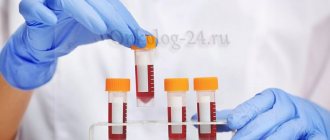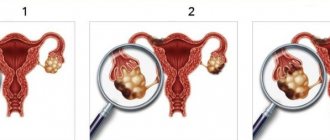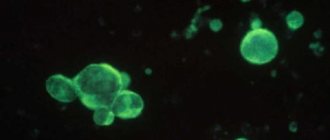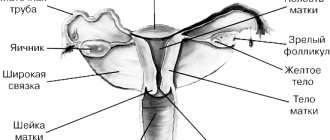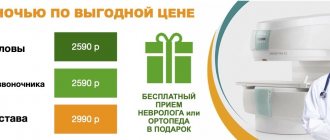Genetic testing is the most popular type of modern research. DNA analysis can reveal the accuracy of certain situations. For example, a DNA test confirms or denies paternity.
If it is necessary to establish a relationship with a child, it is recommended to contact an expert institution, submit biomaterial and receive a conclusion with the results of the study, which are given with a probability of more than 99%.
What is determined as a result of genetic testing?
To ensure the reliability of the examination result, it is necessary to correctly select a sample of the biological material of the people being tested and verify their identity.
A DNA test is carried out to determine:
- degree of relationship or paternity;
- origin from a specific ethnic group;
- Rh factor and gender of the child;
- the likelihood of developing hereditary diseases;
- predisposition to play sports;
- person's personality.
Genome research is done to determine the relationship between several people. This need arises for a number of reasons. For example, to enter into an inheritance after a deceased citizen, to collect alimony from an able-bodied relative (parent or child), in other family situations.
In addition, genetic testing is often necessary for:

- correction of errors in documents of relatives;
- restoration of any official papers due to their destruction, loss or location in inaccessible places (in another country);
- establishing the belonging of several people to one genealogical group (for example, all brothers and sisters of a grandmother, mother and child are determined along the female line).
DNA testing is carried out regardless of how long ago the events occurred and how long ago family ties were lost.
How to do a genetic paternity test
The main purpose of DNA tests is to identify family ties between parents and child. The circumstances that motivate people to conduct this analysis to solve their problems can be very different. For example, the results obtained during it are important information material when challenging maternity or paternity in court. However, often such studies are carried out simply at the personal request of one of the parents who wants to be freed from unnecessary doubts.
A typical procedure involves the participation of two persons: the child and his probable relative. In addition to the father, they can be mother, brothers, sisters. At the same time, one cannot fail to note the availability of the test. Typically, the cost of a paternity test in Kazan ranges from 12-20 thousand rubles.
Establishment of paternity in court is carried out only by court ruling. The procedure consists of taking samples of biomaterial from all interested parties with the participation of two witnesses. Then the obtained data is placed in special envelopes and sent to the laboratory, from where all information is sent directly to the court.
Only an organization that has the appropriate license can practice judicial determination of the fact of kinship. Otherwise, the court will simply not accept the data of the analysis.
Decoding the paternity test
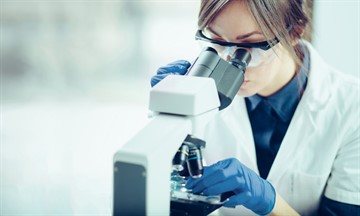
It is quite difficult to obtain the necessary information - it is necessary to decipher the DNA analysis through sequencing. This suggests that a sequence of microstructures (multiple letter values) needs to be established.
To study a molecule, it is isolated from a biomaterial sample, and then numerous copies are made for use in the study. Using several analysis techniques, the result is deciphered: positive or negative.
Positive result

After testing is completed, the customer receives a written conclusion with the result. It is expressed as a percentage and, when paternity is confirmed, is 99.999999%. This is the highest figure.
A DNA test cannot be 100%, since 0.01% is allocated to the fact that each person has an alleged twin with a similar chromosome set.
Nevertheless, in court such a result is considered positive, and paternity is recognized as full. The test is determined differently, after which the blood relationship between the man and the child is refuted.
Negative result

A negative result is indicated as 100% and is never questioned. Therefore, if such a result is available, the customer is recommended to perceive it as the only correct one.
However, first it is worth understanding whether a genetic test always gives a true answer. If a man refuses to take a DNA test, material from his relatives - parents, children, brothers and sisters - can be used for analysis.
The result of a test on a buccal epithelium sample taken from a grandparent or grandchildren is similar to a paternity test.
DNA analysis
The term DNA analysis refers to the analysis of genetic sequences. This method was invented in the 1980s by an English geneticist. DNA analysis is used for a variety of purposes - it allows for intraspecific identification, for example, humans, animals, and is also used to differentiate individuals within the same species. If there is a need for genetic research, contact DNCOM. Our company is one of the leaders in the laboratory diagnostics market and specializes in genetic testing. We can offer reasonable prices, high accuracy, efficiency and confidentiality. Services are provided in Moscow, Tula, Kursk, Krasnodar and other cities.
Why are DNA tests performed?
DNA analysis is used to solve a large number of problems that are related not only to personal identification. Below are the most common types of genetic testing that rely on DNA testing.
1) Newborn screening
. In the maternity hospital, on the 4th day, the first genetic testing is carried out. A DNA test is needed to identify genetic disorders that can appear early in life and that can be corrected if detected early. The baby's heel blood is tested for 5 common conditions: cystic fibrosis, adrenogenital syndrome, hypothyroidism, phenylketonuria, galactosemia.
2) Diagnostic testing.
Studies of this kind make it possible to identify the disease with 100% accuracy. DNA testing is performed when a preliminary diagnosis has been made based on signs and symptoms. DNA analysis only confirms the genetic nature of the disease.
3) Predictive genetic tests or predisposition analysis.
Doctors often recommend that healthy people take a DNA test for preventive purposes. Such measures are necessary to search for changes in the genetic apparatus that increase the likelihood of a particular disease. The results only indicate the risk of developing a specific disease. For example, cancer risks, a tendency to thrombosis or excessive accumulation of iron (hemochromatosis), etc. A positive result for a predisposition to a disease can serve as the basis for making recommendations for the prevention of conditions in the future, which requires the patient to be more attentive to their health. This is the most common type of DNA analysis in the DNCOM laboratory.
4) Genetic testing for people who already have a family history of an inherited disease or belong to certain ethnic groups.
Predictive genetic tests are especially important in groups of people with a family history of the disease. People who "carry" changes in genes associated with a disease may not show signs of the disease, but may be able to pass the gene change on to their children. DNA tests are recommended for all people in whom one or more immediate family members have a condition for which a genetic link has been clearly demonstrated.
5) Preconception preparation or pregnancy planning.
All couples planning pregnancy can undergo preconception preparation. Sometimes this type of DNA analysis helps to identify the carriage of mutations that can be passed on to a future generation. Parents who are both carriers of mutant genes need to undergo medical and genetic counseling regarding the health of their future children and undergo preimplantation testing.
6) Preimplantation testing.
This is a PGD (preimplantation genetic diagnosis) method. Used to detect genetic changes in embryos that were created using assisted reproductive technology.
7) Prenatal testing.
Demonstrates changes in fetal genes or chromosomes before birth. This type of DNA test is performed during pregnancy if there is an increased risk of a genetic or chromosomal disorder. DNA testing is performed either on the mother's blood, which is a safer option for the mother and fetus, other DNA tests require the collection of umbilical cord blood, amniotic fluid or placental tissue. The result of prenatal testing helps reduce the couple's anxiety and allows them to make decisions about the current pregnancy. This DNA test is not able to identify all possible hereditary disorders and birth defects, only the most common ones.


DNA testing is done to identify a person for legal purposes. This type of testing can establish biological relationships between people (for example, paternity, maternity, etc.), identify victims of crimes and disasters, exclude or suggest a suspect in a crime.
A separate niche is occupied by diagnostic methods, where DNA analysis is used to identify pathogens. These are molecular biological methods and, in particular, PCR analysis. The DNA of microorganisms differs from each other. The analysis allows you to determine the presence of genetic material from several pathogens in a sample. Such a study is carried out for the purpose of etiological diagnosis of bacterial or viral infections with a wide range of symptoms, including nonspecific ones, if a specific disease is suspected.
There are several areas related to medicine where DNA analysis has found its application:
- Nutrigenetic analysis
Thanks to nutrigenetics, it was possible to establish a connection between nutrition and the genetic characteristics of the body. The goal of the research is to create a suitable diet to optimize the genetic profile. Indications for analysis include weight correction, the presence of neurological diseases, autism and other conditions.
- Sports Genetics Research
Human physical abilities are laid down at the DNA level. Based on the analysis, it is possible to identify a predisposition to certain sports and determine the optimal load without harm to health. The analysis, in particular, allows parents to make a choice in favor of one or another section for the child.
- Formation of a genetic passport
The medical document represents the complete genome database. An analysis is carried out to create an individual DNA database that reflects the unique characteristics of the body, predisposition to diseases, etc. You only need to get a genetic passport once in your life.
How to perform a DNA test
The DNA analysis process begins with the extraction and purification of DNA from a biological sample. DNA can be identified in several types of samples and extracted using a number of methods. The method chosen often depends on the sample matrix, the amount of DNA, and the purpose of testing.
General DNA testing algorithm:
1) Collection of genetic material
The sample most often used for genetic testing is a blood sample. Prenatal DNA tests involve the examination and collection of more complex biological material, which is carried out by a doctor. When conducting tests to determine biological relationship, buccal epithelial cells are used, which are obtained by scraping from the buccal mucosa. The procedure is quite simple, safe and does not take much time. Samples of saliva, hair, nails, ejaculate, etc. can also serve as material for DNA analysis.
2) DNA extraction
Directly in the laboratory, the registrar enters information about the sample and type of test ordered into the database. After which the genetic material is sent to the laboratory department, where DNA preparation and further analysis will be carried out. Then the process of DNA isolation begins, which is accompanied by treatment with reagents, temperature and mechanical influences. During extraction, the DNA is cleared of impurities and is now ready for direct analysis.
3) Analysis
The prepared DNA sample is placed in a genetic analyzer to identify unique DNA marker regions. Only geneticists can “read” the results of such an analysis and then draw conclusions.
4) Output of the result
DNA analysis data is presented in an easy-to-read form - graphs, diagrams and tables. The conclusion, issued with the laboratory’s seal and the signature of a geneticist, can be issued by hand or sent electronically.
You can submit a request for a DNA test online or by phone. To find out how much a specific service costs, go to the Analysis and Pricing page.
Can the test be wrong?

The question of whether a DNA test can give a false result has long been discussed by scientists and ordinary people.
Firstly, authenticity is evidenced by the fact that the specialist analyzing the test results is liable under Article 307 of the Criminal Code of the Russian Federation for providing knowingly false information.
Secondly, from the number indicated in the conclusion, you can understand the probability of paternity. If the result in a decimal fraction is presented as the number “99” with a large number of digits after the decimal point, this is a significant confirmation of the biological relationship of the man with the child.
To standardize the results, the International Organization for Human Identification has established the following values:
- 99.75-99.99% – paternity is proven;
- 99-99.7% – relationship is confirmed with a high degree of probability;
- 95-98.5% – paternity is quite possible;
- 90-94.5% – relationship is probable.
Thirdly, the probability of a positive or negative result depends on the number of loci taken for analysis. If 25 of them were used, the possibility of paternity would be 99.999999% or more. Today, the possibility of an error in a DNA test to establish paternity is almost eliminated, since the study is carried out using the calculation method described above.
If the relationship of a man and a child is established on the basis of a polymerase chain reaction, an accurate result is guaranteed (the ratio of errors to reliable results is 1: 10,000).
Expert opinion
Irina Vasilyeva
Civil law expert
If a miscalculation occurs, you should take a repeat DNA test. If the visual characteristics of the father and child clearly match the genetic ones, there is no urgent need to repeat the procedure.
Dear readers! To solve your problem right now, get a free consultation
— contact the on-duty lawyer in the online chat on the right or call:
+7
— Moscow and region.
+7
— St. Petersburg and region.
8
- Other regions of the Russian Federation
You will not need to waste your time and nerves
- an experienced lawyer will take care of solving all your problems!
We guarantee:
| Accuracy We test from 25 to 40 DNA loci. Guarantee of DNA analysis accuracy of at least 99.999% | Speed Results are ready within 1 to 5 working days | Confidentiality All DNA test results are strictly confidential |
| Availability We can receive you in every city in Russia and Kazakhstan | Certification Our DNA test results are accepted by the courts of the Russian Federation | Quality All DNA analyzes are performed on high-precision equipment by suitably qualified specialists and in strict accordance with international standards. |
How to take a DNA test
In the Lab-DNK laboratory you can quickly take a DNA test for ethnic origin. Rapid DNA testing is performed on buccal epithelium samples. You can collect genetic material yourself using sterile cotton swabs or order delivery of a free branded kit by courier, or visit the nearest laboratory branch to collect samples. At the same time, the price of ethnic origin analysis today is affordable to almost all segments of the population.
A more in-depth study involves testing DNA from serum samples (EDTA). The Lab-DNK laboratory also accepts non-standard samples for research: nails, hair with hair follicles, earwax, parts of bones and teeth, any personal items with traces of saliva or blood. DNA tests using standard and non-standard samples will also help determine paternity/maternity, calculate infidelity, determine a child’s propensity for sports, and much more - detailed information can be obtained from laboratory specialists or on the company’s website.



